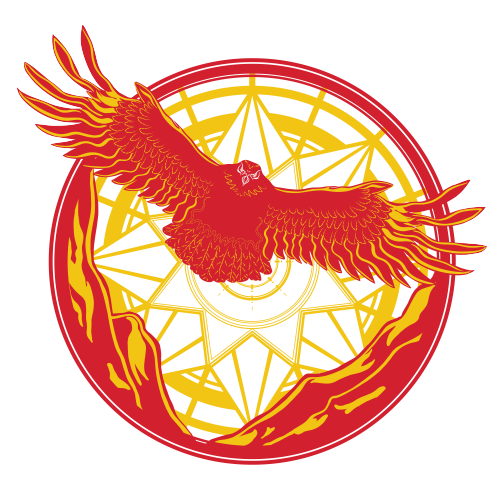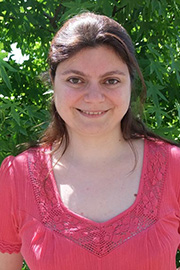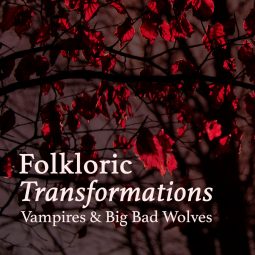INSTRUCTORS:
Folklore is a major source of modern imaginative literature and popular culture. Think of supernatural creatures such as vampires, werewolves, ghosts and fairies, all populating the oral stories of generations of peoples. Think about the tales you heard as a child, “Little Red Riding Hood,” “Cinderella,” “Snow-White” (among many others), the origins of which are lost in the mists of time.
In this course we will explore the transformations of folklore in modern literature, film, and TV. The first part of the course will focus on the figure of the vampire, from ancient Mesopotamian blood-sucking female demons, to early modern Eastern European folklore, and then on to the literary vampire from Coleridge and Polidori to Dracula and Buffy the Vampire Slayer.
The second part of the course will focus on fairy-tales, using “Little Red Riding Hood” as a case study. We will discuss the transition from folk tales to literary fairy-tales, and we will explore different versions of “Little Red Riding Hood,” from Perrault and the Brothers Grimm to Angela Carter’s “The Company of Wolves” and Matthew Bright’s Freeway.
The aim of the course is to gain an understanding of the role of folklore in modern literary and popular culture texts, as well as evaluate what it is that makes folklore material so versatile and enduring in modern culture.
Note: This course has been retired from Signum University’s course rotation but is still available as an Anytime Audit.
Weekly Outline
This course includes two live 90-minute lectures per week with one 60-minute discussion session as assigned.
Week 1 – Introduction to Folklore and its transformations
Week 2 – Vampires in folklore
Legend and literature from ancient Mesopotamia to Eastern European folklore, and first literary representations
- Samuel Taylor Coleridge, “Christabel”
- John Polidori, The Vampyre
Week 3 – Bram Stoker’s folklore research
Dracula as a ‘founding narrative’, Dracula and psychoanalysis/sexuality, Dracula and the late Victorian context
- Bram Stoker, Dracula
Week 4 – Adapting the vampire: Gothic legacies (I)
- Richard Matheson, I Am Legend
- Anne Rice, Interview with the Vampire
Week 5 – Adapting the vampire: Gothic legacies (II)
- Joss Whedon, Buffy the Vampire Slayer
- Note: General knowledge of the series is useful, but discussion will focus on Season 1, Season 2, and Season 5, Episode 1 “Buffy vs. Dracula.”
Week 6 – Adapting the vampire: Gothic legacies (III)
- Charlaine Harris, Dead Until Dark
- Tomas Alfredson, Let the Right One In
Week 7 – Folktales, fairy-tales, and the earliest ‘Little Red Riding Hood narratives
- Charles Perrault, “Little Red Riding Hood”
- Brothers Grimm, “Little Red Cap”
Week 8 – Red Riding Hood and sexuality
- Angela Carter, “The Company of Wolves”
- Neil Jordan, The Company of Wolves
Week 9 – Little Red Riding Hood fends for herself
- Francesca Lia Block, ‘Wolf’
- Matthew Bright, Freeway
Week 10 – Subverting Little Red Riding Hood in Children’s Literature
- Catherine Storr, Clever Polly and the Stupid Wolf
- Roald Dahl, “Little Red Riding Hood and the Wolf”
Week 11 – Little Red Riding Hood in video games and advertising
- Tale of Tales, The Path
Week 12 – Conclusion and Further Transformations
Required Texts
- Richard Matheson, I Am Legend
- Anne Rice, Interview with the Vampire
- Joss Whedon, Buffy the Vampire Slayer
- Charlaine Harris, Dead Until Dark
- Tomas Alfredson, Let the Right One In
- Angela Carter, “The Company of Wolves” (in The Bloody Chamber: And Other Stories)
- Neil Jordan, The Company of Wolves
- Francesca Lia Block, “Wolf” (in The Rose and the Beast: Fairy Tales Retold)
- Matthew Bright, Freeway
- Catherine Storr, Clever Polly and the Stupid Wolf
- Roald Dahl, “Little Red Riding Hood and the Wolf” (in Revolting Rhymes)
- Tale of Tales, The Path
Course History
| Semester | Preceptor(s) |
|---|---|
| Fall 2020 | Dr. Brenton Dickieson & Dr. Maggie Parke |
| Fall 2016 | Kristine Ainsworth Swank & Dr. Brenton Dickieson |




